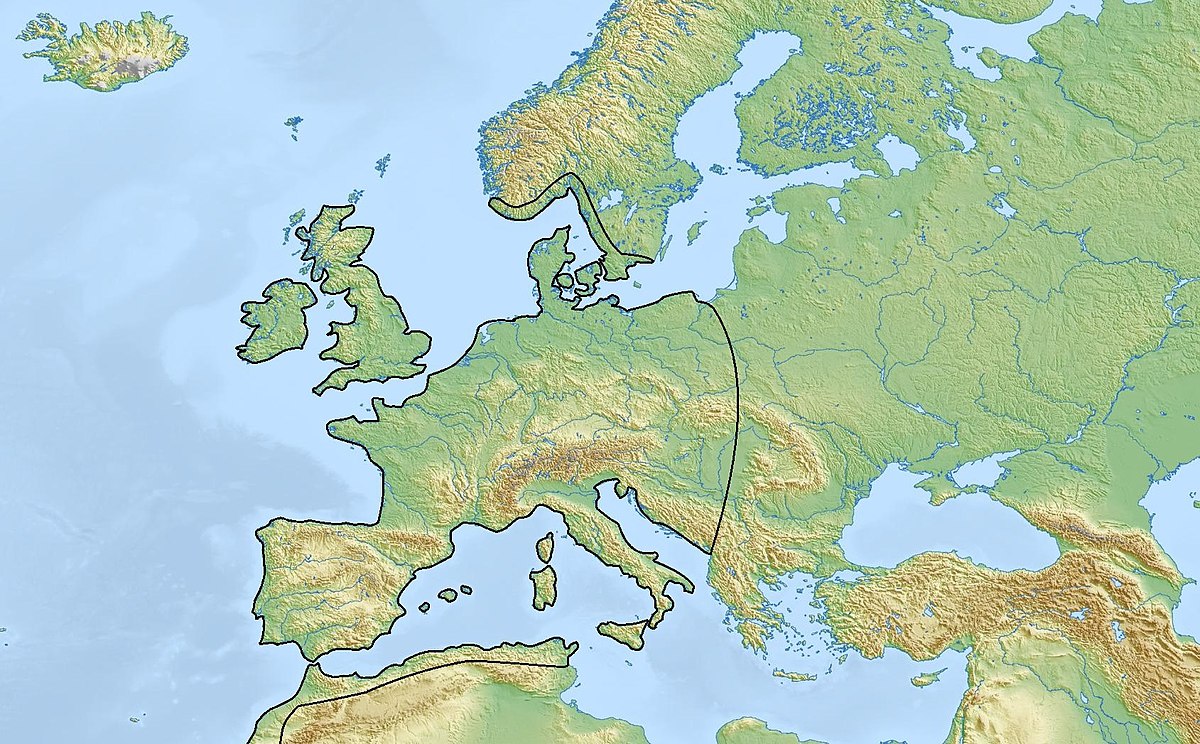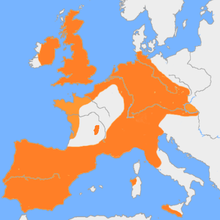You are using an out of date browser. It may not display this or other websites correctly.
You should upgrade or use an alternative browser.
You should upgrade or use an alternative browser.
SCI Why are adult daughters missing from ancient German cemeteries?
- Thread starter Melodi
- Start date
-
- Tags
- archeology bronze age
packyderms_wife
Neither here nor there.
Very interesting. I am going to have to look into it further. I have Bell Beaker DNA.
I'm guessing a lot of us have Bell Beaker DNA, there's more information at the link.

Bell Beaker culture - Wikipedia
Bell Beaker culture
From Wikipedia, the free encyclopedia
Bell Beaker culture

Distribution of the mature Bell Beaker culture[1] | |
| Geographical range | Europe |
|---|---|
| Period | Chalcolithic Europe – Bronze Age Europe |
| Dates | c. 2800–1800 BC |
| Major sites | Castro of Zambujal |
| Preceded by | Corded Ware culture |
| Followed by | Nordic Bronze Age, Únětice culture, Atlantic Bronze Age, Elp culture, Hilversum culture[2] |
The Bell Beaker culture (also described as the Bell Beaker complex or Bell Beaker phenomenon) is an archaeological culture named after the inverted-bell beaker drinking vessel used at the very beginning of the European Bronze Age. Arising from around 2800 BC, it lasted in Britain until as late as 1800 BC[3][4] but in continental Europe only until 2300 BC, when it was succeeded by the Unetice culture. Although recent research found Bell Beaker culture's individuals between 2400 and 2100 BC in Bohemia, Czech Republic.[5] The culture was widely dispersed throughout Western Europe, from various regions in Iberia and spots facing northern Africa to the Danubian plains, the islands of Great Britain and Ireland, and also the islands of Sicily and Sardinia. The Bell Beaker phenomenon shows substantial regional variation, and a study[6] from 2018 found that it was associated with genetically diverse populations, with the sampled individuals outside of Iberia and Sicily characterised by significant levels of Pontic-Caspian steppe-related ancestry.
The Bell Beaker culture was partly preceded by and contemporaneous with the Corded Ware culture, and in north-central Europe preceded by the Funnelbeaker culture. The name Glockenbecher was coined for its distinctive style of beakers by Paul Reinecke in 1900. The term's English translation Bell Beaker was introduced by John Abercromby in 1904.[7]
In its early phase, the Bell Beaker culture can be seen as the western contemporary of the Corded Ware culture of Central Europe. From about 2400 BC the Beaker folk culture expanded eastwards, into the Corded Ware horizon.[5] In parts of Central and Eastern Europe, as far east as Poland, a sequence occurs from Corded Ware to Bell Beaker.
This period marks a period of cultural contact in Atlantic and Western Europe following a prolonged period of relative isolation during the Neolithic.
In its mature phase, the Bell Beaker culture is understood as not only a collection of characteristic artefact types, but a complex cultural phenomenon involving metalwork in copper and gold, archery, specific types of ornamentation, and (presumably) shared ideological, cultural and religious ideas.[8] A wide range of regional diversity persists within the widespread late Beaker culture, particularly in local burial styles (including incidences of cremation rather than burial), housing styles, economic profile, and local ceramic wares (Begleitkeramik).
Origins[edit]
The Bell Beaker artefacts (at least in their early phase) are not distributed across a contiguous area, as is usual for archaeological cultures, but are found in insular concentrations scattered across Europe. Their presence is not associated with a characteristic type of architecture or of burial customs. However, the Bell Beaker culture does appear to coalesce into a coherent archaeological culture in its later phase.
The origin of the "Bell Beaker" artefacts has been traced to the early 3rd millennium, with early examples of the "maritime" Bell Beaker design having been found at the Tagus estuary in Portugal, radiocarbon dated to c. the 28th century BC.[4][9][10] The inspiration for the Maritime Bell Beaker is argued to have been the small and earlier Copoz beakers that have impressed decoration and which are found widely around the Tagus estuary in Portugal.[11] Turek sees late Neolithic precursors in northern Africa, arguing the Maritime style emerged as a result of seaborne contacts between Iberia and Morocco in the first half of the third millennium BC.[12]
More recent analyses of the "Beaker phenomenon", published since the 2000s, have persisted in describing the origin of the "Beaker phenomenon" as arising from a synthesis of elements, representing "an idea and style uniting different regions with different cultural traditions and background."[13
